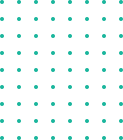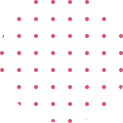Artificial Intelligence Projects Ideas & Topics
Top Artificial Intelligence Project Ideas 2023
Why Is Everyone Talking About Artificial Intelligence Projects For Final Year? Emerging technologies are reforming our daily lives. Here Artificial intelligence will play a vital role in all areas of human life starting form online buying, mobile phones, e-vehicles, transportation etc and it is growing exponentially.
Semiconductor companies are designed AI-powered chips to improve the performance of software used in games, healthcare, industrial, and finance.AI will play a critical role in cybersecurity, voice search, AI-powered Chabot in communication reduces the need for human interaction.
Below is the list of latest IEEE artificial intelligence projects ideas which are 2023 based for engineering students.
Go through the abstracts shortlist the topic from the ieee list & you can fill the quick enquiry for further assistance on synopsis & the implementation details.
List of Advanced Artificial Intelligence Project ideas and Topics
1.Cricket ball tracking using yolov5
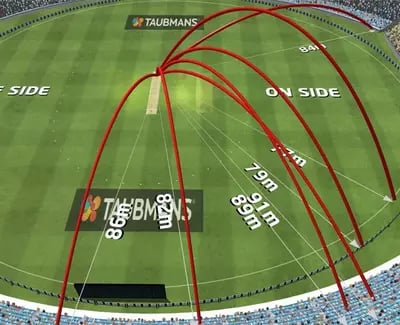
The paper describes a deep neural network-based detect for ball, detection in high resolution, long shot, video recordings of cricket matches. The detect ball , has an efficient fully convolutional architecture and can operate on input video stream with high resolution.
It produces ball confidence map encoding the position of the detected ball, player confidence map ball and player bounding boxes tensor encoding players' positions and bounding boxes. This improves discriminability of small objects (the ball) as larger visual context around the object of interest is taken into account for the classification using yolov5.
Due to its specialized design, the network has two orders of magnitude less parameters than a generic deep neural network-based object detector, such as SSD or YOLO v5. This allows real-time processing of high resolution input video stream. Our code and pre-trained model can be found on the project website
In this project using YOLOV5 deep neural network architecture to predict ball. Accurate and efficient ball detection is a key element of any solution intended to automate analysis of video recordings of source. The method proposed in this paper allows effective and efficient ball in long shot, video recordings. It's intended component of the computer system developed for ball academies and clubs to automate analysis of video recordings.
Detecting the ball from long-and short distance in video. First, the ball is very small compared to other objects visible in the observer scene by frame by frame. its difficult find the ball, so we read the frame, Ball size varies significantly depending on the position.
In long shot recordings in cricket game, the ball can appear as small as 6 pixels, when it's on the far side of the pitch, opposite from the camera; and as big as 20 pixels, when it's on the near side of the field. At such small size, the ball can appear indistinguishable from parts of the player body or the background clutter.
2. How to Predict Alzheimer's disease with the use of Machine Learning
Alzheimer's disease is also known as one of neurodegenerative disorders. Though symptoms can be mild initially, it becomes severe with time. Since there is no proper treatment available for Alzheimer's, it can be
challenging and can cause several complications in your life. The disease can be diagnosed.
But, this is even done in the later stage. So, if the disease is predicted at an earlier stage, the severity of the disease can be tackled by minimizing the progression of the disease.
Machine learning algorithms are helpful when it comes to the prediction of Alzheimer's disease with the use of various psychological parameters such as MMSE, age, education, number of visits, etc.This project is one of the best choice for artificial intelligence projects for computer science
3. Kannada Handwritten character recognition using SVM, KNN and CNN
Handwriting recognition has been an issue of some researchers and analysts Different applications need solution to recognize the cursive nature of handwritten text. The stated nature of written styles needs to implement. This paper needs, relevant research towards handwritten recognition and how to process how to predict.
We used in the recognition of Kannada handwritten words. The main aim of proposed work is to identify Kannada handwritten written words in paper or system etc, and to solve recognition problem by using machine learning algorithms.
One's give the kannada word it will predict the correct words. System provides a detailed concept on pre-processing, segmentation, classifier used to develop systematic CNN The achieved accuracy is of 96.8% for Kannada handwritten words.
Recognizing the handwritten Kannada words is the intention of this paper. Instead of using the keyboard and typing Kannada by Nudi in laptop or computer, if graphics tablet is used to write, whatever we give input, that will be automatically printed. This decreases the burden.
One who is unaware of keyboard, even he can write and get the written words in the standard text form. Recognition is done by using Image Processing and Deep Learning. The pen movement on the tablet helps to collect the dataset. Each data is stored in different folders.
Each folder consists of 25 samples of Kannada character. Python language is used to write code for data collection and data prediction..
4. COVID 19 Detection from Chest X-Ray Using Convolution Neural Networks
Originated from China’s Wuhan, Coronavirus brought a global pandemic and caused 1,055,387 casualties by infecting 36,087,836. It spreads across the world though scientists and medical practitioners made their full effort to control and slow it down from infecting people. They try several methods to detect the infection of Coronavirus.
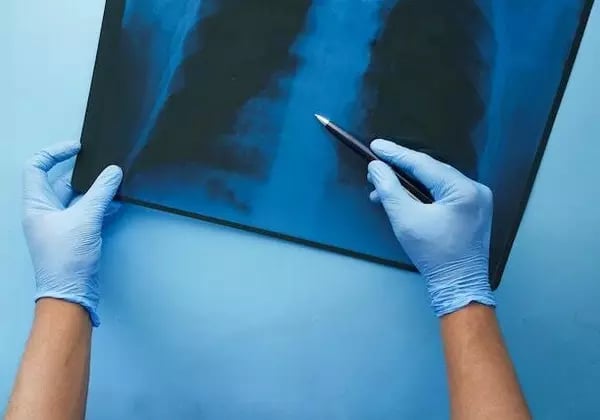
Chest X-ray is one of the methods to diagnose this disease, which is also cost-effective. Meanwhile, only experienced radiotherapists can use X-rays to diagnose Coronavirus.
We have invented a model that works effectively and can diagnose COVID automatically. In today’s time, deep learning algorithms reflect the great results for disease classification. We test and analyze our model to determine whether the image is normal or COVID.
We find out the CNN model analytically. We also ensure the proper accuracy of metrics to validate the classification of the model. you can choose this
5. Brain haemorrhage detection using CNN
We are using Deep learning algorithms and has been applied for image detection and classification, with good results in the medicine such as medical image analysis.
This paper aims to support the detection of brain hemorrhage in computed tomography (CT) images using deep learning algorithms and convolutional neural networks (CNN). The motivation of this work is the difficulty of physicians when they face the task to identify brain hemorrhage, but this project easily find out disease especially when they are in the primary stages of brain bleeding, making a misdiagnosis.
A some of CT studies were used to train and evaluate two convolutional neuronal networks in the task of classifying hemorrhage or non-hemorrhage. The proposed CNN networks reach 92% of accuracy..
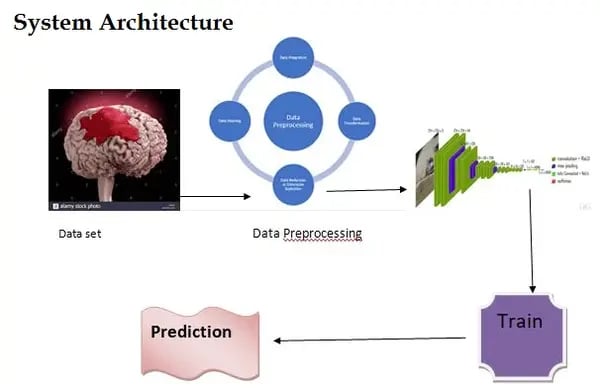
Intracranial hemorrhage (HIC) corresponds to bleeding inside the skull caused by a vascular rupture. Speed of diagnosis is crucial because the mortality reaches up to 62% after 30 days and 34% to 58% of patients die before a month after being diagnosed, and approximately half of these deaths occur within the first 24 hours (Caceres and Goldstein, 2012) (Rodríguez-Yáñez et al., 2013).
This is a reason why HIC is considered a medical emergency and specialists must diagnose it properly and quickly. However, in general medicine settings and emergency rooms, up to 20% of patients with suspected HIC may be misdiagnosed, which is an indicator that bleeding cannot be reliably distinguished without the support of medical imaging techniques (Gross et al., 2019).
Brain neuroimaging computed tomography (CT) for the diagnosis of intracranial hemorrhage, is the most reliable method during the first week after the onset of HIC. The visualization of intracranial hemorrhage in CT images depends on density, volume, location, relationship with the surrounding structures (Cohen, 1992), all previous properties make HIC diagnosis difficult. An automatic process for HIC detection in the triage workflow, would significantly decrease the time to diagnosis and expedite treatment..
Explore Categories
- Data Science projects
- Django Projects
- Image Processing / Video Processing IoT - ML - AI - Deep Learning
- Open CV projects Python Projects
6. Early Detection Deep Learning Type Convolution Neural Network Architecture for Multiclass Classification of Alzheimer’s Disease
Alzheimer’s disease in today’s time has become one of the medical issues that most people across the world face. The disease causes memory loss. Elders facing this disease can experience cognitive decline. Currently, there’s no treatment to control Alzheimer’s disease. Meanwhile, if it’s diagnosed at an early stage, it can be managed in a better way.
There are numerous studies performed to use machine learning to diagnose Alzheimer's disease and also its classification. In the studies, we took into account the Open Access Series of Imaging Studies-3 (OASIS-3) dataset along with the number of MRI images of infected persons, which was approximately 2,168.
The MRI images were used of those patients who were suffering from mild to various other stages of cognitive decline. We made the best application of deep learning-based convolution neural networks (CNN), which are highly popular approaches for studies related to diagnosis-based.
The model was developed with the use of 70% images and also made the application of 10-fold cross-validation for proper validation of the model. We classified the developed model in multiple stages of dementia images and also achieved an overall accuracy of 83.3% which is more than those of traditional classification techniques such as logistic regression, support vectors, and more.
Contact us for Advanced AI Projects
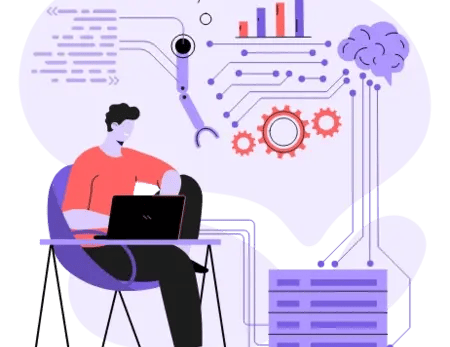
7. Face Mask Detection Using Convolution Neural Network
Effective strategies are crucial to controlling the COVID 19 pandemic to minimize its impact on everything be it public health or the global economy. Meanwhile, it’s not a complete solution to deal with the severe impact of this disease. Several measures were tried to limit the infection rate and minimize the burden of health infrastructure in absence of specific medicine or injection of this disease.
Wearing a mask is a non-medicinal and cost-effective measure that one can effectively implement at the minimum cost even without hindering any social practices. So, it’s indeed quite necessary to create a complete system that can detect even those citizens who wear a face mask and also those who don’t.
We create this system with the perfect use of deep learning techniques and also Machine Learning and also create a complete CNN model for detecting people who wear masks. The face mask is considered to be one of the effective strategies when it comes to removing cross-contamination.
8. Fire and Gun Violence-based Anomaly Detection System Using Deep Neural Networks
When it comes to real-time object detection, it is the right option for improving the surveillance method and also a leading application of CNNs, which stands for Convolutional Neural Networks. The research work targeted handguns and fire detection in those areas that are surveillance with the use of cameras. Be it industrial explosions, home fires, or wildfires, numerous factors hurt the environment.
Mass shootings and gun violence are also on the rise in several parts of the world. These incidents are indeed time sensitive and also tend to cause a loss of both property and also life. The proposed work develops a model called deep learning that is based on the YOLOV3 algorithm and includes video frame-by-frame for detecting several anomalies and churning out an alert for those concerned bodies.
The new model includes the overall detection rate of 45 frames per second and a validation loss of 0.2864. It is said to have a complete benchmark of various datasets such as UGR, IMFDB, and FireNet. These come with an overall accuracy of 82.6%, 89.3%, and 86.5%. When it comes to experimental results, these mostly satisfy the target of the proposed model. Besides, it also reflects a quick detection rate that one can deploy both indoors and outdoors.
9. Image Processing-based Tracking and Counting Vehicles
This research is primarily based on the technique to detect the vehicle, which is useful for a traffic surveillance system. It works great with the integration of CCTV cameras mainly for detecting vehicles. The initial step mainly includes the detection of car objects.
Haar Cascades are perfect for detecting vehicles through footage. Apart from this, Viola Jones Algorithm is quite useful for offering training cascade classifiers. We perform certain modifications to spot the unique objects in the footage captured by cameras. These are indeed the fastest growing methods to help you identify with accuracy to count and track a car object while ensuring up to 78%.
Also Read : IoT Project Ideas
10. Human Activity Recognition Based on Graman Angular Field and Deep Convolutional Neural Network
With the fast growth of wearable devices and the Internet of Things (IoT), human activity recognition based on sensors gained huge exposure from researchers for having a wonderful characteristic of convenience and also more privacy.
However, deep learning algorithms tend to extract those high-dimensional features automatically, which indeed brings the possibility for end-to-end learning. Besides, the convolutional neural network is known for its wide application in the area of computer vision, while the great influence of camera shielding, environmental background, and various other factors indeed offer the biggest challenge for the same. Meanwhile, HAR that include sensors tend to circumvent these too.
In this paper, two HAR methods based on deep CNN are proposed. For one, through a multi-dilated kernel residual module, which is a completely new and improved deep CNN network, Mdk-ResNet, it generally extracts a great feature among those of various sampling points with multiple intervals.
Apart from this, Fusion-Mdk-ResNet is generally adopted for fusing and processing collected data with the help of different sensors. It’s done automatically. These types of comparative experiments are generally conducted on different public activity datasets, which include UCI, WISDM, HAR, and OPPORTUNITY.
The optimal outcomes are something that is mainly obtained with the use of indexes that include precision, accuracy, F-measure, and recall. These are something that generally validates the effectiveness of those various proposed methods. This AI projects for beginners is best choice
11. Forgery Image Detection Using Neural Network
Digital imaging witnessed huge growth in today’s time. Computer-generated images are something that is considered to be perfect for various applications. In today’s time, there is numerous software that one can find for image manipulation to make the image appear original.
At present, finding out those various forgeries is considered to be an important issue. For determining whether an image is doctored or original is indeed quite challenging. Identifying forging images is indeed one of the toughest tasks in today’s digital era.
So, it’s indeed quite necessary to find the right technique for distinguishing those various generated pictures as well as those that are morphed. This paper indeed includes a method that is highly efficient and based on a convolutional neural network.
The major purpose of this proposed system is to identify those tampered images with the use of the neural network CNN, which includes the ability to learn various features of images and also make a prediction of whether any image is fake or real. It improves image framework security, by adding a complete assessment in a user-friendly, quick, and also non intrusive manner, although the use of perfect assessment of the quality of the image.
12. Detection of skin cancer using deep learning and image processing technique
Disease, comparable to dermatologists, can empower lifesaving and quick judgments employing the establishment of applications on cell phones. This investigation demonstrates the most up-to-date orderly audit of cutting-edge research on characterizing skin sores with CNNs. We limit our audit to skin injury classifiers. Specifically, strategies that apply a CNN just for division or for the order of dermoscopic designs are not considered here.
Moreover, this prevention addresses why the equivalence of the introduced methodology is exceptionally troublesome and which difficulties should be tended to later on. We looked through Google Scholar, PubMed, Medline, Science Direct, and Web of Science information bases for orderly surveys and unique examination articles distributed in English.
Just papers that announced adequate logical processes were remembered for this survey. We found 13 papers that grouped skin sores utilizing CNNs. On a basic level, characterization strategies can be separated by three criteria:
- those that utilize a CNN prearranged through another enormous dataset and afterward streamline its boundaries to the grouping of skin sores
- those approaches that utilize a pre-made CNN without adjusting its borders to encompass schoolings centered around a specific type
- those approaches where the pixel coordinates are calculated using serene processing techniques--these approaches.
13. Social Distancing Detector using YOLO v3 Image Processing Algorithm
Because of the lack of awareness and negligence, the population is at real risk from the pandemic coronavirus (covid19), which has caused the spread of an epidemic to 180 countries and 147 million confirmed cases. Scientists have developed several vaccines for covid19, but due to its severity, many are continuing - and eventually succumbing to - the disease.
Therefore, we as a species must distance ourselves from one another to protect ourselves. This article serves as our proposed solution: a social distancing detector using image processing including deep learning for monitoring automation tasks so that humans don't need to think about any other solution.
The deep learning framework requires the YOLO v3 object detection model to figure out what's moving in an image and find boxes around people. We'll use these bounding boxes to count how many people break social distancing in one interval of time.
14. A Deep Neural Framework for Continuous Sign Language Recognition by Iterative Training
Sign Language recognition is improved by introducing a deep learning architecture. A recurrent Neural Network Model called BiLSTM (Bidirectional Neural Network) is used to create a better accuracy of sign language recognition and the trained deep learning model can predict new sequences in Sign Language. This is done by iterating with new sign language sequences predicted, or it can be recognized by the trained BiLSTM model.
Explore Categories
- AI Projects / Artificial Intelligence Projects Biomedical Project
- Data Science projects Django Projects
- Image Processing / Video Processing IoT - ML - AI - Deep Learning.
- Open CV projects Python Projects
15. Automatic Motorcyclist Helmet Rule Violation Detection using Tensorflow & Keras in OpenCV.
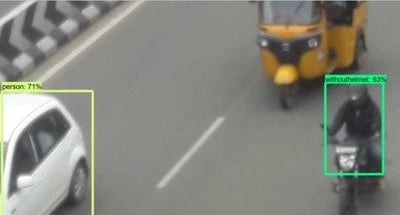
Studies have shown an increase in motorcycle accidents because riders neglect safety. So, to address this issue, countries often have laws mandating the use of helmets for motorcycle riders. If a rider falls without a helmet at an accident site, they are at the highest risk of traumatic brain injury; if the head meets with impact during an accident, the head is vulnerable due to not wearing any type of helmet and can result in death. In India, there's a rule that applies only to riders but not passengers.
Someone may be injured and or die from an accident involving a motorcycle who does not wear a helmet even if it is just as a passenger. To prevent injuries, we're developing a system that uses Tensorflow & Keras in the field of Computer Vision.
The system can detect if someone has taken off their helmet with real-time precision and will declare rules violations accordingly when applicable. Implementing this system will also result in fewer people using helmets--which will save human lives on motorcycles.
16. Gaze Estimation Using Residual Neural Network
Eye tracking has become an important topic in human-computer interaction because it can be implemented in different fields such as medicine and neuroscience. Innovations in gaze estimation pose a challenge for eye tracking. Researchers are exploring the use of deep learning models to predict eye gaze on mobile devices.
ResNet-18 is a type of neural network designed to predict gaze using images and data collected via deep learning. We performed an extensive eye-tracking dataset and used adaptive normalization to achieve better results.
17. Automatic Detection of Diabetic Retinopathy: A Review on Datasets, Methods, and Evaluation Metrics
Diabetic retinopathy (DR) is one of the fast-growing diseases today across the world. The disease occurs as diabetes. Diabetic retinopathy is the leading cause of blindness in adults, but detection has not progressed as quickly.
The detection of these diseases can be done both automatically as well as manually. In manual detection, both observation and explanation of those retinal fundus images require an ophthalmologist. And this process is indeed time-consuming, apart from being expensive.
As far as the automated system is concerned, it includes the best use of Artificial Intelligence (AI) that is best used for performing an imperative role in the detection of diabetic retinopathy compared to those of various traditional detection approaches. Ophthalmologists must analyze and explain retinal images which takes a time-consuming and expensive process.
Automation is complicated because ultimately an ophthalmologist needs to identify the raisin or be convinced by what the machine deems as diabetic retinopathy. New advancements have been made that could help automate DR detection. The author reviews 3 areas related to this topic: datasets, recognition methods, and performance evaluation metrics.
18. Plant Leaf Diseases Detection and Classification Using Image Processing and Deep Learning Techniques.

In today’s time, every country needs various agricultural products. In the case plants get infected, it tends to make an impact on the agriculture production of any country and also its various economic resources. It can have a serious impact on the supply of food or resources and is one of the major causes of food shortages all over the world.
This paper presents a system that uses deep learning to classify and detect plant diseases. In this work, only tomatoes, potatoes, and peppers were used because they are most common in Iraq and around the world. In our research work, we have included a range of plants such as tomatoes, potatoes, pepper, etc.
These are indeed the most common types of plants across the world, especially in Iraq. The data set includes 20636 images of plants and also their diseases. In a system that we proposed, we also used various convolutional neural networks (CNN), through which the plant leaf diseases are generally classified, overall 15 classes were classified mainly including 12 classes for diseases of a range of plants, including fungi, bacteria, etc.
As a result, we detected the finest accuracy in terms of both testing and training. We experienced an accuracy of 98.029% for testing and also an accuracy of 98.29%. This is for all the data used.
19. AI Vision Based Social Distancing Detection.
Starting from China, Coronavirus spread across the world, and citizens from 180 countries witnessed the fearful situation caused by this global pandemic. COVID-19, a pandemic infected so far 3,519,901 and killed 247,630 as per the data reported on May 4, 2020.
In the absence of any specific medical, social distancing has become the most popular and possible approach for fighting against this global pandemic. This document mainly focuses on proposing complete deep learning based on a framework to make the task automated.
This task is related to analyzing social distancing with the use of surveillance video. People with no treatment are being invented. Using deep learning models, surveillance videos of cities can be used to track people who are not practicing social distances and monitor them to ensure they do not cross any spatial boundaries.
20. Parkinson Disease Detection Using Deep Neural Networks.

Also known as a neurodegenerative disorder, Parkinson's disease causes damage to motor function because of the loss of dopamine-producing brain cells. When it comes to Parkinson's disease, it includes various symptoms such as stiffness, tremors, slowness in movements, impaired balance, and many more.
Recently, two neural network-based models were created to help doctors and patients diagnose Parkinson's disease at an early stage: Voice Impairment Classifier and VGFR Spectrogram Detector.
Using an extensive empirical evaluation of CNNs (Convolutional Neural Networks) on large-scale image classification and ANNs (Artificial Neural Networks), the models outperformed others that already exist. As far as the experimental result is concerned, it is something that reflects that those proposed models generally outperform the already existing state of art.
The classification accuracy on VGFR Spectrogram Detector is something that is recorded as 88.1% with the growth of Voice Impairment Classifier with an accuracy of 89.15.
21. Efficient Masked Face Recognition Method during the COVID-19 Pandemic.
The sudden outbreak of COVID brought many casualties and deteriorated the health infrastructure of many countries. Wearing a mask was one of the preventive measures to prevent COVID from the spread. People started wearing a mask to protect themselves from the infection.
For COVID-19, a priority for researchers is developing rapid and efficient solutions to the masked face recognition problem. In this document, we propose a reliable deep learning solution that addresses the needs of COVID-19.
The first step is to discard the masked region. Next, deep features are extracted from regions mainly containing the eyes and the forehead. Relying on the Bag-of-features paradigm applied to these features and MLP for classification, this proposed method has high performance on Real-World-Masked-Face data.
22. Age and Gender Prediction Using Deep Convolutional Neural Networks
Gender and age recognition are considered to be a crucial part of any security, network, and care. These are something that has common use in those of age-specific content access for kids. It is used by social media in the most effective way for delivering layered ads and also promoting its reaches. When it comes to face recognition, it has indeed developed to a wider extent that we need to map it for getting the most effective outcomes.
This paper includes deep CNN to improve both gender and age prediction from significant outcomes that can be obtained. One can witness the significant results for various tasks that include face recognition. Simple convolutional network architecture is generally proposed for making a complete improvement in this area with the use of some existing methods.
The use of the deep CNN model is trained to a wider extent that accuracy of both age and gender became 79% with the use of HAAR feature-based Cascade Classifiers, which is a highly effective method proposed by Michael Jones, and Paul Viola. It is an approach based on machine learning that involves training cascade functions from various positive and negative images. It is also used for detecting objects in other images as well.
23. Computer Vision for Attendance and Emotion Analysis in School Settings
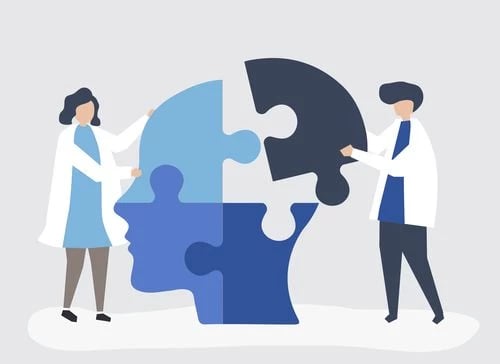
This paper serves its actual purpose to present emotional analysis and facial detection software developed mainly for those secondary students and also for teachers. The main purpose of this software is to offer a complete tool that minimizes the overall time teachers spend on attendance work. Besides, it is also capable of gathering data that enhance teaching practices. Apart from this, the software also helps teachers to monitor the emotional states of students over time.
This is something that can be accomplished most easily by offering teachers early warning notifications, especially when students deviate negatively from their characteristic emotional profile. This project aims to help teachers in saving their precious time. It also helps them in addressing the mental health and related needs of students. And they can motivate students to improve their mental state.
Teachers can learn computer vision, computer science, and machine learning as they need to modify the code in the classroom. The key takeaways from the initial outcomes are the increase in training images is proportional to the increasing accuracy of the software. Moreover, if the distance between the face and camera is more, it means that the face will not be recognized correctly.
24. Computer-Aided Segmentation of Liver Lesions in CT Scans Using Cascade Convolution Neural Networks and Genetically Optimized Classifier
Abdominal CT scans are one of the most widely researched and studied subjects by a large number of medical professionals in today’s time. CT scans are highly effective for the detection of abnormal function of the liver in people. Computer-aided automatic segmentation of the liver is mainly the primary step that many radiologists use to detect the structure and abnormalities of the liver.
In this paper, we have explained deep learning techniques that are most effective for liver extraction from the abdominal CT scan and then, for segmentation of the lesions from a tumor-ridden liver. A cascade model of convolutional neural networks is the best to use for segment lesions once GA-ANN detects tumors in the liver.
25. Sentiment Analysis of Top Colleges

In the current era reviews, opinions play crucial role in planning sees from claiming clients and also influence us to the success of a brand, service of a product. The same also apply when deciding the best among various alternatives we have.
For the approach and development about online networking in the world, stakeholders frequently take part in expressing their feelings looking into prominent social media, to be specific twitter. Same time twitter information may be greatly informative; it displays a test for investigation in light of about its humongous and disarranged way.
The work in this report is to perform sentiment analysis on the top colleges in the country, considering the tweets from one of the social media named twitter. In the process of analysis many pre-processing techniques can be applied on the data that is generated by twitter, applying machine learning algorithms like KNN(K- nearest neighbors) to classify the best college among IITS, NITS and so on.
By using Naïve Bayes and K-NN algorithms the results were generated in R Programming on the educational institutions. Then the results were measured in terms of accuracy with respect to Naïve Bayes and KNN. If you like to do project on ai then your first choice should be this ai projects for final year students
26. CNN-Based Pneumonia Detection
Chest X-ray images were chosen from retrospective cohorts of those pediatric patients, aged 1 to 5 years old from Guangzhou. The chest X-ray imaging was done as routine clinical care for patients. To analyze chest X-ray images, the screening of all chest radiographs was done for quality control by removing unreadable and low-quality scans.
Two expert physicians performed the diagnosis for images before they get cleared for the training of the AI system. To account for any kind of grading errors, the evolution set was checked thoroughly by other experts. This is one of the best ai based projects for beginners to start with
27. What to play next? An RNN-based music recommendation system
In today’s time, the fast development of music recommendation systems created a big issue mainly due to the consumption of digital songs that are higher level and the growth of machine learning techniques. In music recommendation systems, collaborator filtering and various other traditional approaches are used to a wider extent. It helped the system to give listeners a complete across of the music.
However, the collaborative filter is also known to have certain limitations in yielding better outcomes and ignores factors such as genre and lyrics.
This paper includes a fully improved algorithm based on the deep neural network to measure similarity between various songs. The proposed method can make it fully feasible that it could make certain recommendations in a vast system for making a full comparison by understanding the content of songs.
Here, we purpose an end-model based on a recurrent neural network for predicting users’ possible songs. We will make a perfect evaluation and experiments on the basis of the Million Song Dataset and also for demonstration in terms of the way it outperforms those of various traditional methods.
these above list of artificial intelligence projects with source code in python will help engineering students to choose the best projects for there final year.
Looking for Artificial Intelligence Projects source code?
Connect with our experts
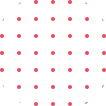

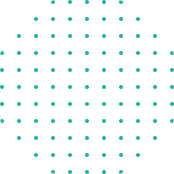

Frequently Asked Questions (FAQs)
A Medical prescription is a handwritten document written by doctors in the form of instructions that describes list of drugs for patients in time sickness, injuries and other disability problems. While we receiving a new prescription from doctor, it is unable to understand what drug name is prescribed on it. In most cases, however, we wouldn't be able to read it anyway because doctors use Latin abbreviations and medical terminologies on prescriptions that are not understandable by the general persons which make reading it very difficult. Peoples are sickened, injured or killed each year by errors while reading prescription. This paper resolves the problems in doctor’s prescriptions by using OCR (Handwritten) based on medicine details what are all the components are used along with that cost if cost is more we can recommend some other medicine.
Image blur detection and removal have been one of the major topics of research in image processing in the recent years. These blur detection and removal algorithms have many real world applications including image restoration and image enhancement. Image blur can include motion blur and out-of-focus blur or blurring due to lens imperfections. This paper also proposes an approach for motion blur detection and removal involving Convolutional Neural Network(CNN) and Generative Adversarial Network(GAN).
Having diseases is quite natural in crops due to changing climatic and environmental conditions. Diseases affect the growth and produce of the crops and often difficult to control. To ensure good quality and high production, it is necessary to have accurate disease diagnosis and control actions to prevent them in time. Grape which is widely grown crop in India and it may be affected by different types of diseases on leaf, stem and fruit. Fruit diseases which are the early symptoms caused due to Gray_mold, Healthy Grapes, powdery_mildew and Sour rot. So, there is a need to have an automatic system that can be used to detect the type of diseases and to take appropriate actions suggest remedies.
Now days difficult find drone are bird because drones are popular, and increasingly everywhere, so we implemented this project detect the drones. In addition to their useful applications, an alarming concern regarding physical infrastructure security, safety, and surveillance at airports has arisen due to the potential of their use in malicious activities. In recent, there have been many reports of the unauthorized use of various types of drones at airports and the disruption of airline operations and some human cannot find the drone or birds. This problem, that’s why we implement this project using deep learning-based method for the efficient detection and recognition of two types of drones and birds. Evaluation of the proposed approach with the prepared image dataset demonstrates better efficiency compared to existing detection systems.. Furthermore, drones are often confused with birds because of their physical and behavioral similarity. The proposed method is not only able to detect the presence or absence of drones in an area but also to recognize and distinguish between two types of drones, as well as distinguish them from birds. The dataset used in this work to train the network consists of some visible images containing two types of drones and birds. The proposed deep learning method can directly detect and recognize two types of drones and birds.
We using Deep learning algorithms and has been applied for image detection and classification, with good results in the medicine such as medical image analysis. This paper aims to support the detection of barin hemorrhage in computed tomography (CT) images using deep learning algorithms and convolutional neural networks (CNN). The motivation of this work is the difficulty of physicians when they face the task to identify brain hemorrhage, but this project easily find out disease especially when they are in the primary stages of brain bleeding, making a misdiagnosis. A some of CT studies were used to train and evaluate two convolutional neuronal networks in the task of classifying hemorrhage or non-hemorrhage. The proposed CNN networks reach 92% of accuracy.
Today’s modern vehicles contain anywhere from sixty to one-hundred sensors and exhibit the characteristics of Cyber-Physical- Systems (CPS). There is a high degree of coupling, cohesiveness, and interactions among vehicle’s CPS components (e.g., sensors, devices, systems, systems-of-systems) across sensing, communication, and control layers. Cyber-attacks in the sensing or communication layers can compromise the security of the control layer. This paper provides a detailed review of potential cyber threats related to the sensing layer. Notably, the focus is mainly towards two categories of sensors: vehicle dynamics sensors (e.g., Tire Pressure Monitoring Systems (TPMS), magnetic encoders, and inertial sensors) and environment sensors (e.g., Light Detection and Ranging (LiDAR), ultrasonic, camera, Radio Detection and Ranging (Radar) systems, and Global Positioning System (GPS) units). The paper also offers perspectives through existing countermeasures from literature and stresses the need for data-driven cybersecurity solutions.
The number of Wireless sensor network (WSN) deployments have been growing so exponentially over the recent years.Due to their small size and cost-e_ective, WSN are attracting many industries to use them in various applications.
Environmental monitoring, security of buildings and precision agriculture are few example among several other _elds.However, WSN faces high security threats considering most of them are deployed in unattended nature and hostile environment.
In the aim of providing secure data processing in the WSN, many techniques are proposed to protect the data privacy while being transferred from the sensors to the base station.This work is focusing on attack detection which is an essential task to secure the network and the data.
Anomaly detection is a key challenge in order to ensure the security and prevent malicious attacks in wireless sensor networks.Various machine learning techniques have been used by researchers these days to detect anomalies using o_inelearning algorithms.
On the other hand online learning classi_ers have not been thoroughly addressed in the literature. Our aim is to provide an intrusion detection model compatible with the characteristics of WSN. This model is built based on information gain ratio and the online Passive aggressive classi_er.
Firstly, the information gain ratio is used to select the relevant features of the sensor data. Secondly, the online Passive aggressive algorithm is trained to detect and classify di_erent type of Deny of Service attacks. The experiment was conducted on a wireless sensor network-detection system (WSN-DS) dataset.
The proposed model ID-GOPA results detection rate of 96% determining whether the network is in its normal mode or exposed to any type of attack.The detection accuracy is 86%, 68%, 63%, and 46% for scheduling, grayhole, ooding and blackhole attacks, respectively, in addition to 99% for normal tra_c.
These results shows that our model based on o_ine learning can be providing good anomaly detection to the WSN and replace online learning in some cases.
Medicinal Plants and Natural Medicine are becoming more important in our lives. It will be very useful to know so many remedies for better health. Many people already use these techniques and enjoy day to day living a fuller life. There are a number of advantages associated with the use of medicinal plants rather than pharmaceuticals such as side effects or lower cost. Hence, this model proposes an AI-based solution designed to provide in-depth information on medicinal leaves and herbs with just a single image. This model will help people living in remote areas to understand the medicinal benefits of trees and plants around them and harness them for their well-being. This work instantly determines the identification of plants with Object detection technology in AI and gives information of the medicinal leaf about medicinal virtues on health. It shows the virtues, scientific names, chemical compounds and how to use plants to have a natural remedy. It also gives the detailed information about the medicinal leaf if it has any special precautions to be taken in the cases of pregnant and breastfeeding women to avoid problems such as miscarriages etc . There are several plants that look alike from afar and it's typically little details that distinguish 2 species of a similar genus. Flowers, fruits and leaves are the foremost characteristic organs of a species and it is them that ought to be photographed first. However the other details are often helpful to identify plants are such as thorns, buds or hair on the stem.
Agriculture is India's economic backbone. It is a source of income for roughly half of India's population. It is mostly a produce-oriented business; hence the profit or loss is determined by the yield gained. The most pressing concerns in agriculture is controlling weeds developing amid plantation crops. Weeds are found on every farmland in the globe [1].
Weeds are plants that grow unintentionally in agricultural soils and are undesirable. These compete for light, water, and nutrients with attractive plants, introduce illnesses or viruses, and attract harmful insects and pests, resulting in yield loss[2].
Weeds don't have a botanical categorization since a plant that is a weed in one place isn't a weed in another. It's used to describe any plant that grows or reproduces aggressively, or that is growing outside of its natural environment[3].
Outside of the plant world, the phrase is sometimes used to generically characterize organisms that can exist in a variety of settings and reproduce swiftly. These have seeds that last for many years in the soil seed bank. In agricultural research, weed categorization is a severe problem. Identification of weed species for management requires weed categorization. Weeds are divided into the grass and broadleaf groups depending on the shape of their leaves. Because grass and broadleaf weeds are treated differently owing to the selectivity of particular herbicides for the specific group, the division between these two classifications is appropriate[4].
In intracranial hemorrhage treatment patient mortality depends on prompt diagnosis based on a radiologist’s assessment of CT scans. In this paper, we investigate the intracranial hemorrhage detection problem and built a deep learning model to accelerate the time used to identify the hemorrhages. To assist with this process, a deep learning model can be used to accelerate the time it takes to identify them. In particular, we built a convolutional neural network based on ResNet for the classification. Using 752,803 DICOM files collected from four international universities by the Radiological Society of North America (RSNA) [1], we trained and tested a ResNet- 50 based model for predicting the hemorrhage type. Our model has an accuracy of 93.3% in making the correct multiclass prediction and an average per-class recall score of 76%. We show it is possible to achieve an average recall of 86% while maintaining 70% precision via tuning the prediction thresholds.
With the increasing number of drones, the danger of their illegal use has become elevant. This has necessitated the creation of automatic drone protection systems. One of the important tasks solved by these systems is the reliable detection of drones near guarded objects. This problem can be solved using various methods. From the point of view of the price–quality ratio, the use of video cameras for a drone detection is of great interest. However, drone detection using visual information is hampered by the large similarity of drones to other objects, such as birds or airplanes.
Face alignment is a crucial component in most face analysis systems. It focuses on identifying the location of several keypoints of the human faces in images. Although several methods and models are available to developers in popular computer vision libraries, they still struggle with challenges such as insufficient illumination, extreme head poses, or occlusions, especially when they are constrained by the needs of real-time applications. Throughout this article, we propose a set of training strategies and implementations based on data augmentation, software optimization techniques that help in improving a large variety of models belonging to several real-time algorithms for face alignment. We propose a method to detect the facial landmarks. We are using using CNN algorithm. We apply CNN algorithm for the prediction of the face landmarks. Hence Machine Learning is used to implement the proposed system.
The rampant coronavirus disease 2019 (COVID-19) has brought global crisis with its deadly spread to more than 180 countries, and about 3,519,901 confirmed cases along with 247,630 deaths globally as on May 4, 2020. The absence of any active therapeutic agents and the lack of immunity against COVID19 increases the vulnerability of the population.
Since there are no vaccines available, social distancing is the only feasible approach to fight against this pandemic. Motivated by this notion, this article proposes a deep learning based framework for automating the task of monitoring social distancing using surveillance video.
The proposed framework utilizes the YOLO object detection model to segregate humans from the background and to track the identified people with the help of bounding boxes The violation index term is proposed to quantize the non adoption of social distancing protocol. From the experimental analysis, it is observed that the YOLO with Deepsort tracking scheme displayed best results with balanced criteria to monitor the social distancing in real-time.
Parkinson's disease is a progressive and chronic neurodegenerative disorder. As the dopamine-generating neurons in parts of the brain become damaged or die, people begin to experience difficulty in speaking, writing, walking, or completing other simple tasks. These symptoms grow worse over time, thus resulting in the increase of its severity in patients. In this paper, we have proposed a methodology for the prediction of Parkinson’s disease severity using deep neural networks on UCI’s Parkinson’s Telemonitoring Voice Data Set of patients. We have used ‘TensorFlow’ deep learning library of python to implement our neural network for predicting the severity. The accuracy values obtained by our method are better as compared to the accuracy obtained in previous research work.
This paper presents facial detection and emotion analysis software developed by and for secondary students and teachers. The goal is to provide a tool that reduces the time teachers spend taking attendance while also collecting data that improves teaching practices. Disturbing current trends regarding school shootings motivated the inclusion of emotion recognition so that teachers are able to better monitor students’ emotional states over time. This will be accomplished by providing teachers with early warning notifications when a student significantly deviates in a negative way from their characteristic emotional profile. This project was designed to save teachers time, help teachers better address student mental health needs,and motivate students and teachers to learn more computer science, computer vision, and machine learning as they use and modify the code in their own classrooms. Important takeaways from initial test results are that increasing training images increases the accuracy of the recognition software, and the farther away a face is from the camera, the higher the chances are that the face will be incorrectly recognized.
Face Detection has evolved as a very popular problem in Image processing and Computer Vision. Many new algorithms are being devised using convolutional architectures to make the algorithm as accurate as possible. These convolutional architectures have made it possible to extract even the pixel details. We aim to design a binary face classifier which can detect any face present in the frame irrespective of its alignment. We present a method to generate accurate face segmentation masks from any arbitrary size input image. Beginning from the RGBimage of any size, the method uses Predefined Training Weights of VGG – 16 Architecture for feature extraction. Training is performed through Fully Convolutional Networks to semantically segment out the faces present in that image. Gradient Descent is used for training while Binomial Cross Entropy is used as a loss function. Further the output image from the FCN is processed to remove the unwanted noise and avoid the false predictions if any and make bounding box around the faces. Furthermore, proposed model has also shown great results in recognizing non-frontal faces. Along with this it is also able to detect multiple facial masks in a single frame. Experiments were performed on Multi Parsing Human Dataset obtaining mean pixel level accuracy of 93.884 % for the segmented face masks.
Age and gender identification have become a major part of the network, security and care. It has a common use in age specific content access for children. Social media uses it in delivering layered ads and marketing to extend it’s a reach. Face recognition has developed to a great extent that we have to map it further in getting more useful results having different approaches. In this paper, we propose deep CNN to improve age and gender predication from significant results can be obtained and a significant improvement can be seen in various tasks such as face recognition. A simple convolutional network architecture is proposed to make a noticeable improvement in this field using existing methods. Using deep CNN, model is trained to an extent that accuracy of Age and Gender become 79% using HAAR Feature-based Cascade Classifiers is an effective method proposed by Paul Viola and Michael Jones. It is a machine learning based approach where a cascade function is trained from a lot of positive and negative images. It is then used to detect objects in other images.
In Artificial Intelligence (AI), the contents of an image are generated automatically which involves computer vision and NLP (Natural Language Processing). The neural model which is regenerative, is created. It depends on computer vision and machine translation. This model is used to generate natural sentences which eventually describes the image. This model consists of Convolutional Neural Network(CNN) as well as Recurrent Neural Network(RNN). The CNN is used for feature extraction from image and RNN is used for sentence generation. The model is trained in such a way that if input image is given to model it generates captions which nearly describes the image. The accuracy of model and smoothness or command of language model learns from image descriptions is tested on different datasets. These experiments show that model is frequently giving accurate descriptions for an input image.
The COVID-19 is an unparalleled crisis leading to huge number of casualties and security problems. In order to reduce the spread of coronavirus, people often wear masks to protect themselves. This makes the face recognition a very dicult task since certain parts of the face are hidden. A primary focus of researchers during the ongoing coronavirus pandemic is to come up with suggestions to handle this problem through rapid and ecient solutions. In this paper, we propose a reliable method based on discard masked region and deep learning based features in order to address the problem of masked face recognition process. The rst step is to discard the masked face region. Next, we apply a pre-trained deep Convolutional neural networks (CNN) to extract the best features from the obtained regions (mostly eyes and forehead regions). Finally, the Bag-of-features paradigm is applied on the feature maps of the last convolutional layer in order to quantize them and to get a slight representation comparing to the fully connected layer of classical CNN. Finally, MLP is applied for the classication process. Experimental results on Real-World-Masked-Face-Dataset show high recognition performance
Parkinson's disease (PD) is a neuro degenerative disorder, which is responsible for the deterioration of motor function due to loss of dopamine-producing brain cells i.e.neurons. Tremors, stiffness, slowness in movements, shaking, and impaired balance are some of the primary symptoms of PD. In this paper, two neural network based models namely, VGFR Spectrogram Detector and Voice Impairment Classifier have been introduced, which aim to help doctors and people in diagnosing disease at an early stage. An extensive empirical evaluation of CNNs (Convolutional Neural Networks) has been implemented on large-scale image classification of gait signals converted to spectrogram images and deep dense ANNs (Artificial Neural Networks) on the voice recordings, to predict the disease. The experimental results indicate that the proposed models of artificial neural networks outperformed the existing state of the arts in terms of accuracy.The classification accuracy on VGFR Spectrogram Detector is recorded as 88.1% while Voice Impairment Classifier has shown 89.15% accuracy.
Image-based fruit calorie estimation is crucial to diverse mobile applications for recording everyday meal. However, some of them need human help for calorie estimation, and even if it is automatic, fruit categories are often limited or images from multiple viewpoints are required. Then, it is not yet achieved to estimate fruit calorie with practical accuracy and estimating fruit calories from a fruit photo is an unsolved problem. Therefore, in this paper, we propose estimating fruit calorie from a fruit photo by simultaneous learning of fruit calories using deep learning. We present a system which can recognize the fruit image, and then predict its nutritional contents, such as calories. We present CNN-based approaches to these problems, with promising preliminary results.
Alzheimer’s Disease is a progressive and irreversible neurological disease and is the most common cause of Dementia in people of the age 65 years and above. Detection of Alzheimer’s disease at prodromal stage is very important as it can prevent serious damage to the patient’s brain. In this paper, a method to detect Alzheimer’s Disease from MRI using Machine Learning approach. The MRI image dataset is used in the algorithm. The proposed approach detects the various stages of Alzheimer’s Disease such as moderate-demented and non-demented using CNN algorithm.
Pneumonia is a dangerous overwhelming illness influencing one or the two lungs in people reliably accomplished by minute living things called Streptococcus pneumoniae. One of every three passings in India is caused because of pneumonia as detailed by World Health Organization (WHO). Chest X-Rays which are utilized to research pneumonia need pro radiotherapists for examination. In this manner, building up a modified structure for perceiving pneumonia would be useful for treating the malady quickly especially in remote zones. Considering the accomplishment of noteworthy learning calculations in isolating clinical pictures, Convolutional Neural Networks (CNNs) have extended a lot of thought for sullying plan. Likewise, highlights recognized by pre-masterminded CNN models for epic degree datasets are a lot of significant in picture blueprint assignments. In this work, we evaluate the handiness of pre-masterminded CNN models used as highlight extractors followed by various classifiers for the solicitation for remarkable and standard chest X-Rays. We intentionally pick the ideal CNN model for the clarification. Quantifiable outcomes picked up shows that pretrained CNN models utilized close by oversaw classifier estimations can be critical in isolating chest X-shaft pictures, explicitly to see Pneumonia.
Handwritten digit recognition has recently been of very interest among the researchers because of the evolution of various Machine Learning, Deep Learning and Computer Vision algorithms. In this report, I compare the results of some of the most widely used Machine Learning Algorithms like SVM, KNN & RFC andwith Deep Learning algorithm like multilayer CNN using Keras with Theano and Tensorflow. Using these, I was able to get the accuracy of 98.70% using CNN (Keras+Theano) as compared to 97.91% using SVM, 96.67% using KNN, 96.89% using RFC
The automatic analysis and understanding of music by the computer is the new possibility in the field of music information retrieval [5]. Since the diversity and richness of music content, are high, a multitude of research topics in this field are pursued by the researchers, ranging from computer science, digital signal processing, mathematics, and statistics applied to musicology. Recent development in music information retrieval include automatic audio genre/mood classification, music similarity computation, audio artist identification, audio-to- score alignment, query-by-singing/humming and so on [7]. Content-based music recommendation is one the feasible application that can be provided. From the context information, we can achieve more intelligent context-based music recommendation. Multidisciplinary efforts such as emotion description, emotion detection/recognition [4], feature based classification, and inference-based recommendation are needed for the achievement in content based music recommendation system.
Over the last few years, Chatbots have played a prominent role as human-computer interfaces. Chatbots are generally composed of three modules: the user interface, an interpreter, and a knowledge base. Chatbot can be defines as a program that attempts to simulate typed conversation, with the aim of at least temporarily fooling the human into thinking they were talking to another person. Basically, chatbot is a conversational agent that can interact with user in a given subject using the natural language. Many chatbots have been deployed on the internet for the purpose of education, customer service site, guidance, entertainment. A bot is a software application that performs automated task and chatbots come under the category of bots that live in various chat platforms. A chatbot can converse with humans so the idea of conversation is primary to a chatbot. In other words, a chatbot is a computer program that can converse with humans using artificial intelligence in messaging platforms.
The latest generation of convolutional neural networks (CNNs) has achieved impressive results in the field of image classification. This paper is concerned with a new approach to the development of plant disease recognition model, based on leaf image classification, by the use of deep convolutional networks. Novel way of training and the methodology used facilitate a quick and easy system implementation in practice. The developed model is able to recognize three types of diseases of one plant and pesticides and/or fertilizers are advised according to the severity of the diseases. The type of green leaf diseases is recognized by CNN and KNN algorithms. After recognition, the predictive remedy is suggested that can help agriculture related people and organizations to take appropriate actions against these diseases.
The latest generation of convolutional neural networks (CNNs) has achieved impressive results in the field of image classification. This paper is concerned with a new approach to the development of plant disease recognition model, based on leaf image classification, by the use of deep convolutional networks. Novel way of training and the methodology used facilitate a quick and easy system implementation in practice. The developed model is able to recognize three types of diseases of one plant and pesticides and/or fertilizers are advised according to the severity of the diseases. The type of green leaf diseases is recognized by CNN and KNN algorithms. After recognition, the predictive remedy is suggested that can help agriculture related people and organizations to take appropriate actions against these diseases.
Birds are the warm-blooded vertebrates constituting of class Aves, there are nearly 10 thousand living species of birds in the world with multifarious characteristics and appearances. Bird watching is often considered to be an interesting hobby by human beings in the natural environment. The human knowledge over the species isn’t enough to identify a species of bird accurately, as it requires lot of expertise in the field of Ornithology. This paper presents an automated model based on the deep neural networks which automatically identifies the species of a bird given as the test data set. The model was trained and tested for 20 species of birds with the total images 7637 and 1853 images for train and test respectively and the model has shown a promising accuracy of 98% when tested with the test datasets.
Deep Learning (DL) algorithms enabled computational models consist of multiple processing layers that represent data with multiple levels of abstraction. In recent years, usage of deep learning is rapidly proliferating in almost every domain, especially in medical image processing, medical image analysis, and bioinformatics. Consequently, deep learning has dramatically changed and improved the means of recognition, prediction, and diagnosis effectively in numerous areas of healthcare such as pathology, brain tumor, lung cancer, abdomen, cardiac, and retina. Considering the wide range of applications of deep learning, the objective of this article is to review major deep learning concepts pertinent to brain tumor analysis (e.g., segmentation, classification, prediction, evaluation.). A review conducted by summarizing a large number of scientific contributions to the field (i.e., deep learning in brain tumor analysis) is presented in this study. A coherent taxonomy of research landscape from the literature has also been mapped, and the major aspects of this emerging field have been discussed and analyzed. A critical discussion section to show the limitations of deep learning techniques has been included at the end to elaborate open research challenges and directions for future work in this emergent area.
In the very recent years, development of music recommendation system has been a more heated problem due to a higher level of digital songs consumption and the advancement of machine learning techniques. Some traditional approaches such as collaborator filtering, has been widely used in recommendation systems, have helped music recommendation system to give music listeners a quick access to the music. However, collaborative filtering or model based algorithm have limitations in giving a better result with the ignorance of combination factor of lyrics and genre. In our paper, we will propose an improved algorithm based on deep neural network on measure similarity between different songs. The proposed method will make it possible that it could make recommendations in a large system to make comparisons by “understand” the content of songs. In this paper, we propose an end-end model, which is based on recurrent neural network to predict user’s next most possible song by similarity. We will make experiments and evaluations based on Million Song Dataset and demonstrate how it outperformed the traditional methods.
